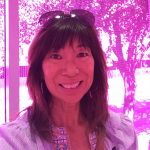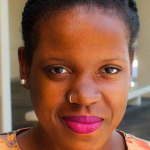
Pauline Kanako Kamiyama
Creative Strategist Initiative: Embedding Artist in the Bureaucracy
Posted by Dec 05, 2018

Pauline Kanako Kamiyama
This summer the LA County Arts Commission (LACAC) kicked off the artist-in-residence Creative Strategist Initiative. One of seven recommendations from the Cultural Equity & Inclusion Initiative that were funded by the LA County Board of Supervisors in 2017, the AIR Creative Strategist Initiative places individuals with artistic expertise in County departments to assist in the implementation of special County projects. Creative Strategists are placed as artists in residence (CS-AIR) for a minimum of 12 months, and work alongside department staff. Together, the department and CS-AIR collaborate with project partners and community stakeholders to effect change and impact a specific project or initiative. The Arts Commission implemented extensive field research and months of conversations with these departments to prepare for artist placement, uncovering critical lessons through the process.
Read More










